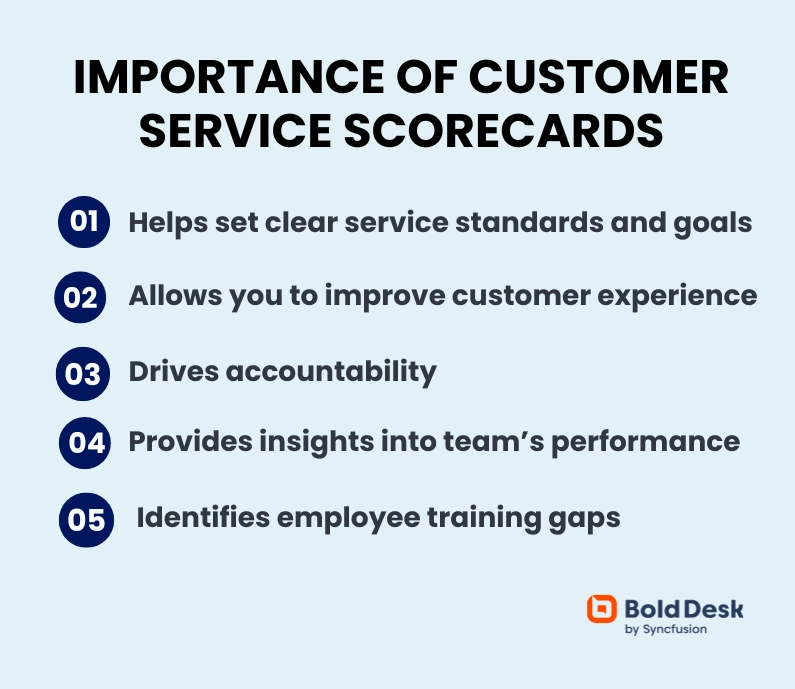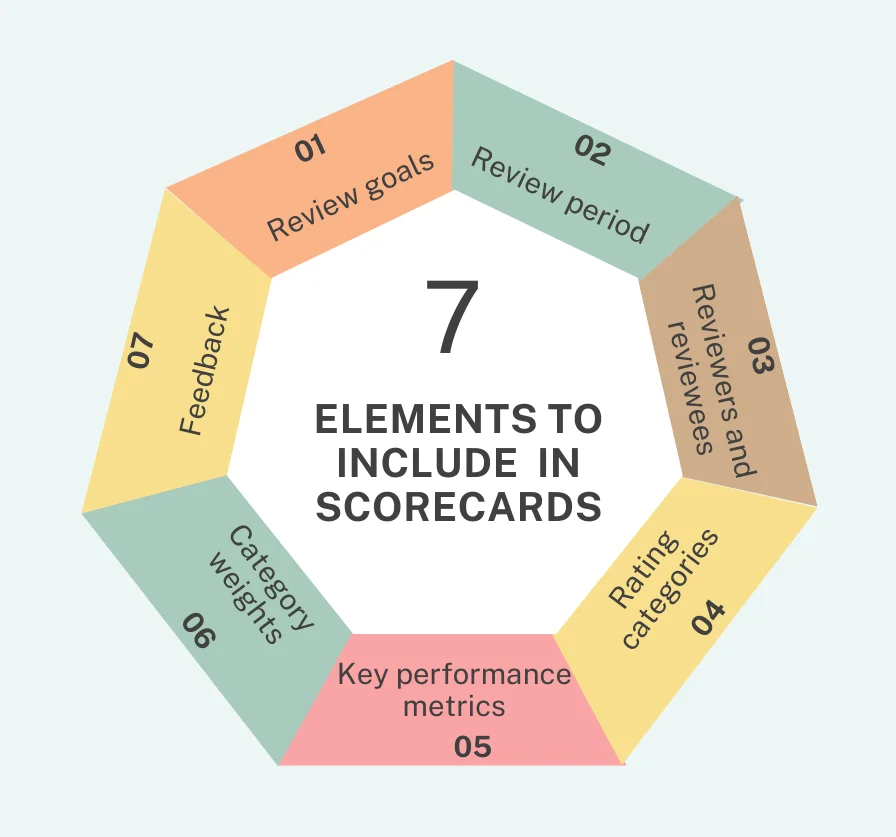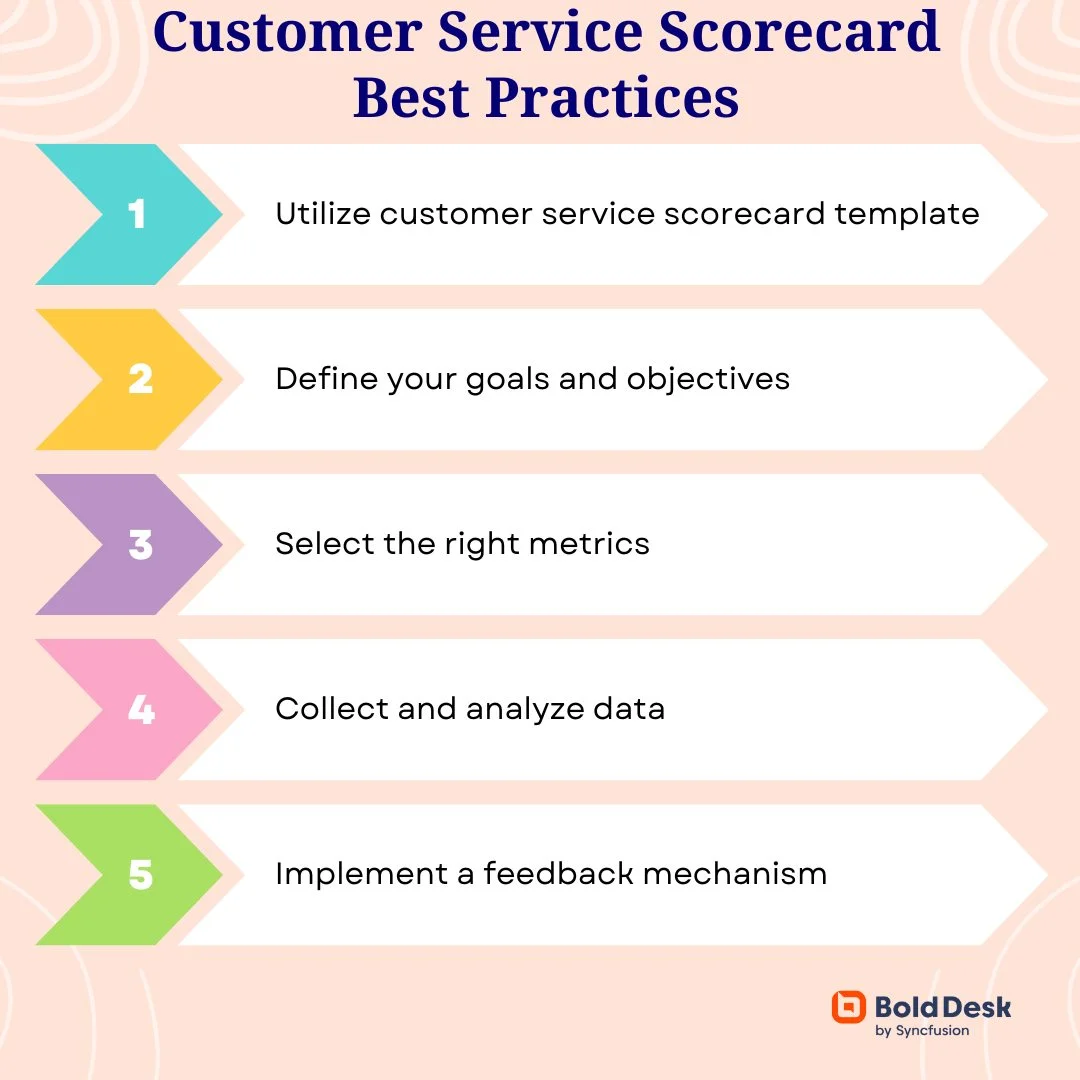In the current market, simply responding to or resolving support issues doesn’t lead to positive customer service experience worth winning their loyalty. Good customer service is now measured by the quality of support and your agents’ performance.
But how do you evaluate the effectiveness of your customer service? Make use of customer service scorecards to evaluate and provide valuable insight into the support quality and your support team’s strengths and weaknesses.
Effective scorecards help businesses identify areas for improvement, make necessary changes, and eventually enhance customer experience.
This blog will provide you with everything you need to know about customer service scorecards.
What is a customer service scorecard?
A customer service scorecard is a method that businesses use to measure and quantify the effectiveness of their customer service efforts.
It is a systematic framework for tracking and analyzing the performance of support agents and the overall quality of customer service.
These scorecards include a set of key performance indicators that align with the company’s objectives.
Insights from the scorecard enable companies to come up with solutions to improve their support teams’ performance and deliver high-quality customer service.
Reasons why businesses use customer support scorecards
Customers’ experience relies on how good the overall support is and how well the agents interact with them across all touchpoints.
The following are the benefits of using customer service scorecards:

Helps set clear customer service standards and goals
Measuring progress enables you to understand if your performance meets expectations or requires further improvements.
A customer service scorecard allows businesses to set measurable performance targets for their support team, such as SLA response or resolution times.
Setting goals and tracking metrics that directly contribute to these objectives can make support teams align customer service efforts to achieve them, such as increasing sales or improving brand image.
Provides a basis for improving the customer experience
Customer service scorecard helps monitor your customer experience metrics.
This enables you to quickly notice the instances when customers are not satisfied and take corrective measures to retain them.
According to SQM group statistics, 95% of customers can continue to do business with a company because they are very satisfied with the support team’s customer experience.
Drives accountability
Tracking customer service scorecard metrics at the individual and team levels holds support agents accountable for their performance.
Knowing that their productivity can directly affect their overall evaluation makes agents be careful in identifying areas to refine in their support operations.
This motivates them to work even harder towards attaining excellent performance that can promote a culture of responsibility and an ongoing improvement within the team.
Provides insights into team’s performance
The scorecard organizes essential performance data in an easy-to-understand format, enabling team leads to track individual and team performance over time.
This allows them to understand whether or not their efficiency and productivity are up to standard.
Companies use the data to identify trends, delays, or repetitive issues and make informed decisions about allocating resources to different teams, training needs, and task management.
Identifies employee training gaps
Customer service scorecard metrics provide managers with the information they can use to identify agents’ skills gaps.
The data enables companies to invest in relevant training programs to improve employee performance and service quality.
Additionally, businesses can recognize inefficiencies, like low first response time, slow resolution time, or low satisfaction scores, which are then addressed to improve the overall quality of service.
Provides a competitive advantage
Customer service scorecard metrics provide companies with insights, enabling them to adapt to changes consistently.
The continuous improvement process helps businesses exceed customer expectations and gives them an upper hand over their competitors who may not have such a structured approach.
Additionally, holding customer service teams accountable and aligning their performance with business objectives can differentiate companies and create a stronger market position.
What should be included in a customer service scorecard?
Here is the most essential information to include in your scorecard so everybody works towards the same goal.

Review goals
Focusing on how well customer service teams meet targets and adjusting where necessary can improve the overall performance.
If a certain goal such as response time or resolution rate is consistently increasing, review to identify the cause and take corrective measures.
Conversely, if your team consistently exceeds certain set goals, you might decide to raise the bar to drive further growth.
For instance, if your team achieves 90% FCR continually, you can adjust to a higher target instead, say 95%.
Review period
The review period is the duration within which agents’ performance and support quality are evaluated.
It helps show when the review took place, revisits the previous reviews to track progress, and identifies possible improvements.
Keep the review lists precise so that you can review them daily, weekly, monthly, or quarterly, depending on the organization’s goals.
Reviewers and reviewees
Reviewers can be the managers and supervisors, whereas reviewees are the support teams or individual agents being evaluated.
List down all the participants in the rating process in your documentation for clear and transparent analysis.
Rating categories
Rating categories are the specific areas that are assessed to gauge the performance of your team.
For instance, you might decide to answer these questions while rating your agents:
- Are they using clear and correct grammar?
- Do they communicate in a friendly tone?
- Do the agents personalize interactions?
- Are they following company policies and procedures?
- Are they taking extra steps to fully meet customer expectations?
Having too many categories can overwhelm your customers, while having too few may not yield sufficient insight into your support operations and performance.
For example, on a scale of 1 to 5, a support agent who performed exceptionally may receive a 5, whereas an agent who needs improvements may score a 3.
Key performance metrics
Businesses can offer products and services to their clients but do not understand the overall experience delivered to customers.
Customer service scorecards usually entail performance metrics that help companies evaluate the efficiency and effectiveness of support being offered.
Category weights
Category weights is the value you wish to attain in each metric for you to achieve your target.
However, you have to prioritize certain areas over others based on their importance in regard to your desired goal.
Assign appropriate weights to each metric based on its role and your objective to ensure that critical metrics have more impact on the overall value.
For example, if you believe customer satisfaction has the most significant impact on customer loyalty, then you can assign it to the highest target score.
Feedback
Customer service scorecards should include space for constructive comments for reviewers to expand and provide context easily.
Well-structured feedback sessions help team members understand their scores, identify areas to refine, and develop their skills for better results.
How to build a customer service scorecard
Now that you know what your scorecard should include, here is a step-by-step guide on creating an effective customer service scorecard.

Utilize a customer service scorecard template
Consider using a customer service scorecard template with predefined fields to ensure you do not leave anything behind.
Customize the scorecard based on the goals of your customer support processes.
Additionally, organize the scorecard in an easy to understand and visually appealing layout so you can clearly feature the ratings.
|
Customer Service Scorecard Template |
|||||
| Vision/ Mission | Strategic Objectives/ Goals | Measures | Target | Initiative | Results |
| Satisfy customers | Enhance customer satisfaction | Low customer satisfaction | % increase | ||
| Lower customer complaints | Quality of services | % increase | |||
| High referral rates | Net promoter score (NPS) | % increase | |||
| Streamlined workflow | Fast response times | Response time | % increase | ||
| Reduce costs | Pricing | % increase | |||
| Enhance employee skills | Training | % increase | |||
| Shareholders’ approval | More customers | Number of customers | % increase | ||
| Low churn rate | Churn rate | % increase | |||
| Innovative solutions | Teamwork | % increase | |||
| Productive agents | Improve support skills | Training | % increase | ||
| Lower employee burnout | Burnout | % increase | |||
| High customer satisfaction scores | Customer satisfaction scores | % increase | |||
Define your goals and objectives
Clearly outline your customer service objectives that you aim to achieve within a specified period with the scorecard.
Are you intending to improve customer satisfaction, reduce response times, enhance agent productivity, or increase customer retention?
Set targets and benchmarks for realistic performance based on historical data, company standards, and business objectives.
Consider involving your employees in any customer-facing roles in the process of setting the goals.
For example, if the average response time is 6 hours and you intend to reduce it, you can set a target of a shorter time, say 4 hours, over the next quarter.
Select the right customer service scorecard metrics
Choose metrics that can give a comprehensive overview of the quality of service and operational efficiency and align with your defined objectives and goals.
Include metrics that indicate the average duration of interactions, customer satisfaction, and agents’ effectiveness.
The following is a summary of the metrics to be included in the scorecard.
| Metrics | Description | Measurement unit |
| Customer satisfaction score | Measures the level to which customers are satisfied with the services offered. | Rating range of 1 to 5, presented as %. |
| Service level agreement | Indicates the percentage of customer support requests resolved within the specified time frame. | % of customer interactions meeting SLA. |
| First contact resolution | Monitors the percentage of customer issues resolved on the first interaction. | % of calls resolved on the first attempt. |
| Net promoter score | Defines the likelihood of customers recommending your company to others. | Rating can either be on a scale of 0 to 5 or 0 to 10. |
| Average handle time | Calculates the average duration for an agent to manage a customer issue. | Time units, minutes, and seconds. |
| Average response time | Measures the average period of time for the customer support team to respond to a customer issue. | Time units, minutes, and seconds. |
| Customer retention rate | Gauges the ability of customer service efforts to retain existing customers. | % of retained customers monthly, quarterly, or yearly. |
| Escalation rate | Quantifies the percentage of cases escalated to higher levels of support. | % of escalated cases. |
| Customer effort score | Measures the effort that customers use to manage or resolve an issue related to a product or service. | Rating is often on a scale of 1 to 7. |
| Ticket volume | Tracks the total number of customer support tickets during a given period. | Total number of customer service tickets per day or month. |
| Customer churn rate | Tracks customers who stopped engaging in your business. | % of customers lost. |
| Customer lifetime value | Quantifies the value a customer brings throughout the entire engagement. | Revenue in monetary units |
Collect and analyze data
Use post-interaction surveys to gather data from multiple customer service channels such as email, calls, live chat, social media, and in-person interactions to get data on customer satisfaction (CSAT), customer effort score (CES), or net promoter score (NPS), among other metrics.
Update your customer service scorecard results to ensure it is relevant to customer service trends and whether it is on track to achieve the set goals.
Track individual agents’ performance to identify strengths and weaknesses using agent-specific KPI such as average resolution time, etc. This helps you identify how each support agent is performing and areas to improve in.
Recognize the top performers to encourage them to keep up the good work and motivate the rest of your team to deliver the best support.
Implement a feedback mechanism
Share the scorecard results with your customer service team and adopt a feedback mechanism for them to give opinions and suggestions on how to improve.
Gallup conducted research and found that 26% of support agents agree that the feedback they get helps them to do their work in a better way.
Refine the customer support scorecard to adapt to changing business goals, new technologies, and evolving customer expectations.
Keep an eye on metrics related to new trends in customer service, such as artificial intelligence and omnichannel support, among others, to assist you in adjusting your scorecard.
Consider integrating artificial intelligence tools that can offer deeper insights into customer sentiment, predict future trends, or highlight emerging issues.
Customer service scorecard example
This customer service scorecard provides a clear overview of performance against set targets, enabling businesses to identify where improvements are required or where the team is exceeding performance.
| Metric | Target | Actual Performance | Variance |
| Customer satisfaction score (CSAT) | 90% | 88% | -2% |
| Net promoter score (NPS) | 50 | 55 | +5 |
| First contact resolution (FCR) | 85% | 80% | -5% |
| Average handle time (AHT) | 4 minutes | 4.2 minutes | +0.2 minutes |
| Response time | 1 hour | 45 minutes | -15 minutes |
| Customer effort score | 3 or below | 2.8 | -0.2 |
| Customer retention rate | 90 | 92% | +2% |
The positive variances, like the NPS and customer retention rate, indicate that customers trust your brand and are likely to refer to others.
Nonetheless, there are several areas that require enhancement, such as addressing customer issues during the initial contact and enhancing the overall customer experience.
Leverage customer service scorecards for exceptional support experiences
Evaluating the overall team performance and the quality of support you offer can help you refine customer service strategies and enhance the team’s productivity.
Review and analyze your customer service scorecard data frequently to achieve customer service excellence and satisfaction.
If you have any additional insights into customer service scorecards, please share them in the comments section.
BoldDesk provides insightful data to help you update your customer service scorecard so you can manage your team better.
Contact us for a 30-minute live demo and discover how BoldDesk can enable you to stand out.
Sign up for a 15-day free trial to experience our capabilities.
FAQs for Customer Service Scorecards
Related articles


















 Email Ticketing System
Email Ticketing System Shared Inbox Software
Shared Inbox Software Multi Brand Help Desk
Multi Brand Help Desk Internal Help Desk Software
Internal Help Desk Software Trouble Ticketing Software
Trouble Ticketing Software Mobile Help Desk
Mobile Help Desk 


















